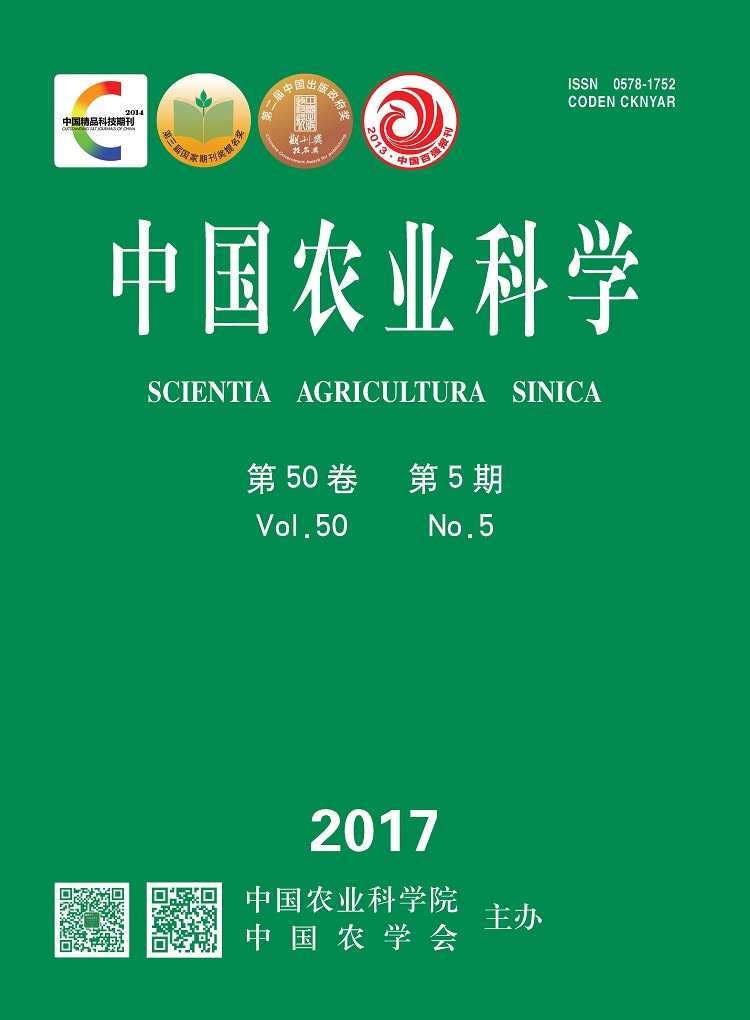-
Effect of Hydrogen-Rich Water Soaked Cucumber Seeds on Cold Tolerance and Its Physiological Mechanism in Cucumber Seedlings
- LIU FengJiao, CAI BingBing, SUN ShengNan, BI HuanGai,AI XiZhen
-
Scientia Agricultura Sinica. 2017, 50(5):
881-889.
doi:10.3864/j.issn.0578-1752.2017.05.011
-
 Abstract
(
597 )
Abstract
(
597 )
 HTML
(
5 )
HTML
(
5 )
 PDF (711KB)
(
463
)
PDF (711KB)
(
463
)
 Save
Save
-
References |
Related Articles |
Metrics
【Objective】Hydrogen (H2), a newly discovered gas signal molecules, is involved in plant stress responses to high temperature, drought, salt damage, heavy metals and other kinds of adversity. The purposes of this study are to elucidate the regulatory mechanism of hydrogen-rich water (HRW, H2 donor) on chilling tolerance in cucumber seedlings and provide technical guidance to improve the adaptation of cucumber to low temperature in solar-greenhouse. 【Method】 ‘Jinyou 35’ cucumber seedlings were used as experimental materials. Seeds were soaked with HRW or distilled water (control), respectively, for 8 h, and germinated on moist filter paper in the dark at 26℃ for 2 days, then grown in vermiculite in a solar-greenhouse for 15 days (day/night air temperature was 24-30℃/18-24℃, and RH 75%-90%). At 2-leaf stage, the HRW and the control seedlings were exposed to low temperature (day/night temperature was 8℃/5℃). Young fully expanded leaves were sampled for analysis on 0 d, 1 d, 3 d, and 5 d after transferring from control to stress condition. 【Result】The results showed that chilling stress significantly increased the electrolyte leakage (EL), chilling injury index, contents of hydrogen peroxide (H2O2) and malondaldehyde (MDA), and superoxide anion (O2-) production rate. The activities of superoxide dismutase (SOD), peroxidase (POD), catalase (CAT), ascorbate peroxidase (APX) and glutathione reductase (GR), as well as the contents of glutathione (GSH), ascorbic acid (AsA), proline and soluble sugar increased in the early days of chilling stress, but subsequently decreased. The relative water content trended to decrease in the chilling days. The increase in EL and chilling injury index were lower in HRW treated seedlings than in the control seedlings. Simultaneously, the HRW treatment showed a decrease in H2O2 and MDA contents, and O2- production rate, while revealed an increase in the activities of SOD, POD, CAT, APX and GR, as well as the GSH and AsA contents, compared with the control. At the end of stress (5 d), the EL and chilling injury index of HRW treatment declined by 11.3 percentage points and 15.9%, respectively, than those of the control. The H2O2 and MDA contents and O2- production rate of the HRW-treated seedlings were 29.4%, 9.9% and 54.3% lower than those of the control, respectively. However, the activities of SOD, POD, CAT, APX and GR of HRW treated seedlings were 12.6%, 20.1%, 20.9%, 53.0%, and 58.1% higher, and the GSH and AsA contents enhanced by 24.0% and 17.6%, respectively, than those of the control seedlings. Compared with the control, the HRW treated seedlings showed lower extent of decrease in the relative water content, and revealed higher contents of proline and soluble sugar. After 5 d of chilling stress, the HRW treatment increased by 6.4 percentage points, and the proline and soluble sugar contents were 23% and 41.5% higher, respectively, than those of the control. 【Conclusion】 Soaking seeds with HRW can improve the cold resistance in cucumber seedlings, and the main mechanisms were: (1) HRW enhances the antioxidant system activity and reduces the reactive oxygen species (ROS) accumulation under chilling stress, and consequently alleviates the injury of membrane lipid peroxidation in cucumber seedling; (2) HRW slows the dehydration rate through improving the osmotic adjustment ability, and thereby remains the normal physiological function for a long time in cucumber seedlings under chilling stress.









